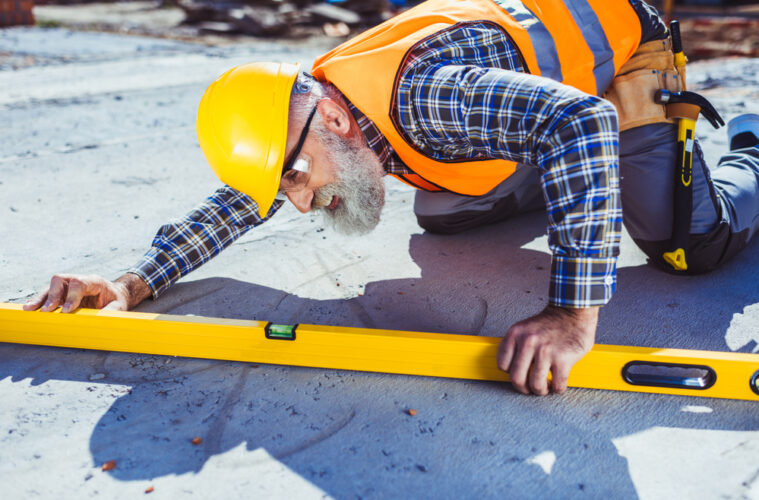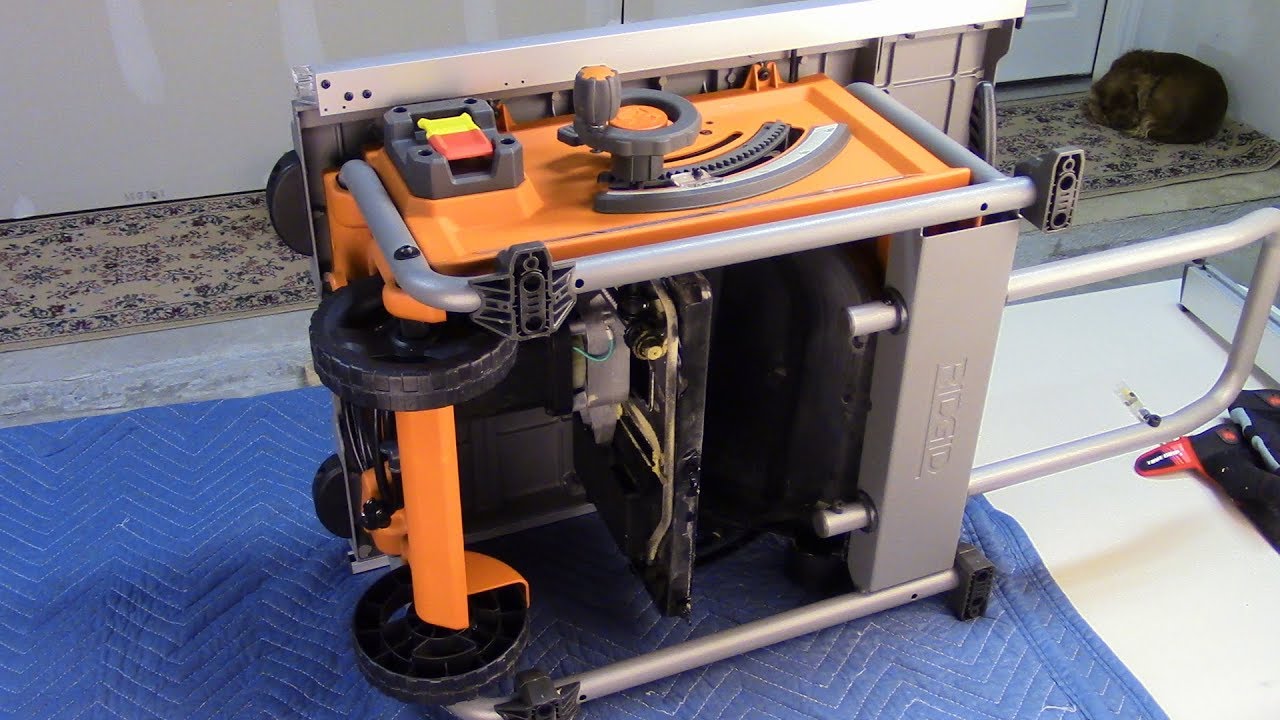Concrete leveling is the process of raising or leveling uneven concrete surfaces by injecting a specialized material. Have you noticed sinking driveways, patios, or sidewalks in your home? It can be fixed with the help of concrete leveling.
Uneven and sunken surfaces can spoil the aesthetic appeal of your home, but more importantly, they can pose serious structural issues. Concrete leveling helps to prevent further damage and ensures the structural integrity of the property. Here we will discuss how concrete leveling works in a detailed manner for you to make an informed decision for your home.
Causes of Uneven Concrete Surfaces
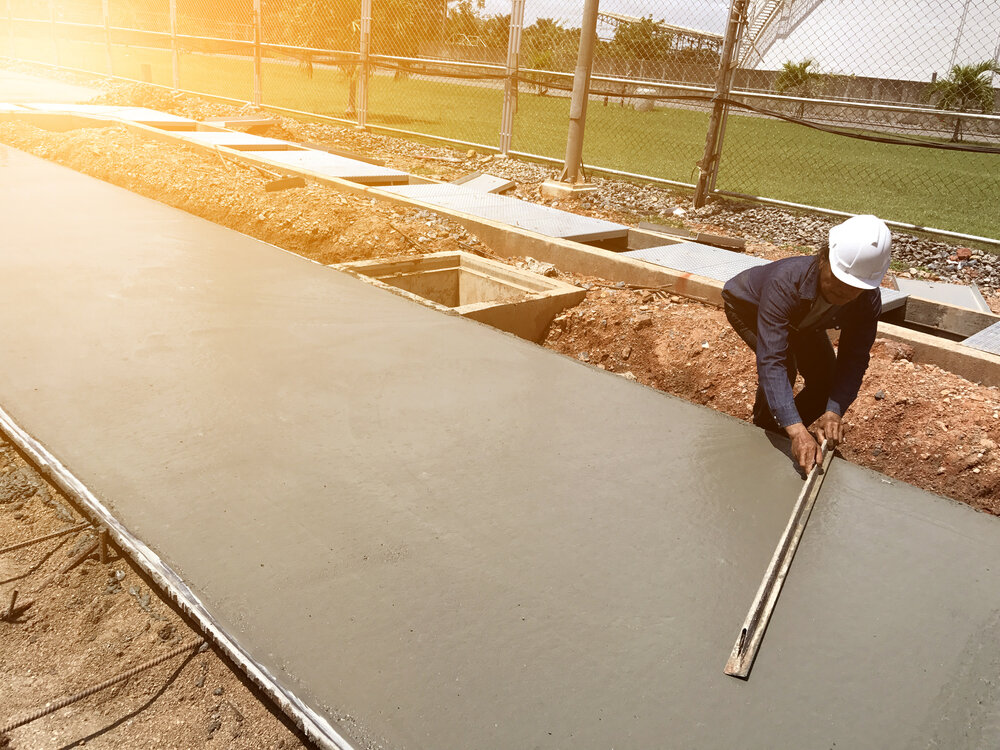
source: pinterest.com
Uneven concrete surfaces can be a result of various underlying issues. These must be addressed promptly to avoid any further damage. Here, we have listed some of the major causes that lead to uneven concrete surfaces.
- Soil Erosion: If there is a poor drainage system or improper soil compaction, water can wash away the soil beneath the concrete. When such soil erosion occurs, a void develops that leads to settlement. The void and soil settlement beneath the concrete cause uneven surfaces.
- Poor Construction Practices: During construction, soil compaction must be prioritized to attain stability. However, lacking the ability to do so leads to uneven settling. The loosely compacted soil beneath the concrete compresses over time, and the concrete surfaces become uneven.
- Hydrostatic Pressure: The water level can change over time due to heavy rain, flooding, or improper drainage systems. These factors can create hydrostatic pressure on the concrete structures. The pressure can force water into the soil beneath the concrete, which can cause the soil to settle. Eventually, the concrete surface becomes uneven due to the change in soil movement.
- Tree Roots: The trees around your building can extend their roots beneath concrete surfaces. These roots can undergo upheaval as they grow. It eventually lifts certain sections of concrete and creates uneven surfaces.
- Seasonal Changes: The changes in seasons can fluctuate temperatures, causing the soil to expand and contract. Especially in colder climates, freeze-thaw cycles can change the water levels of the soil and shift the concrete surfaces.
- Decomposition in Soil: The soil beneath the concrete surfaces can go through the process of decomposition. In this process, organic matter breaks down, releasing gasses and substances, causing the volume occupied by decomposed material to decrease. It leads to the formation of a void beneath the concrete surface and loses its support.
Process of Concrete Leveling
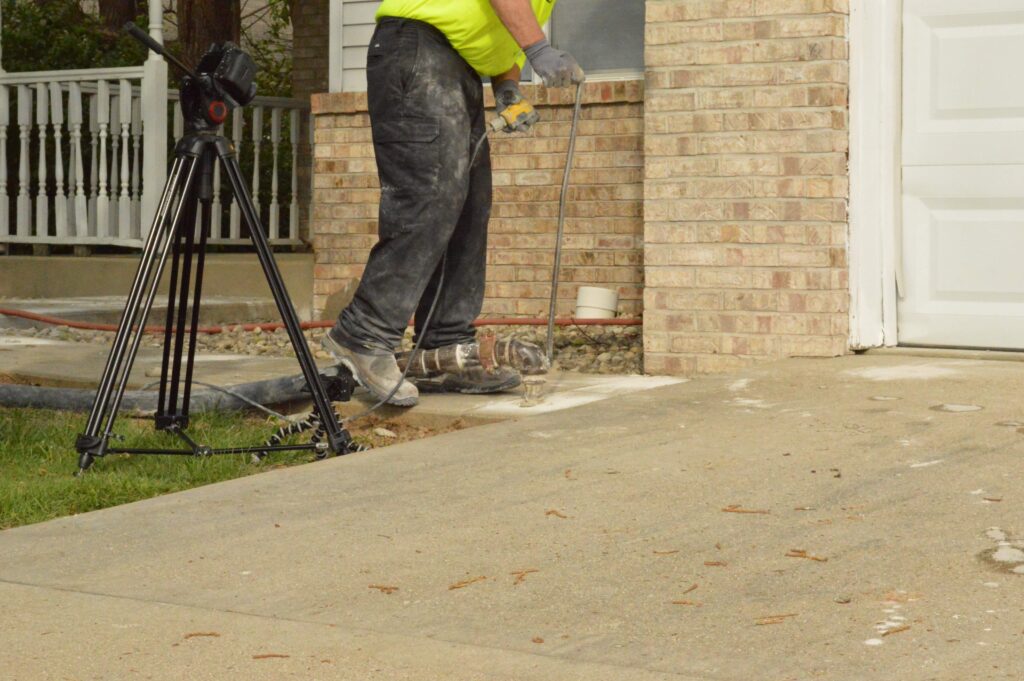
source: pinterest.com
Concrete leveling is an efficient solution to fix uneven surfaces. It provides structural support and maintains the aesthetics of your home. The process of concrete leveling involves a lot of steps to ensure a proper fix to the issue. Here, we have a comprehensive breakdown of how the process works.
Site Assessment
The process is to evaluate the extent of unevenness and identify the areas that require leveling. Along with this, any underlying issues are also identified to avoid the recurrence of the issue.
Surface Cleaning
Following the assessment, the identified areas are cleaned to begin the leveling process. Any debris or dirt on the surface can disturb the process of material injection. So, proper surface cleaning is carried out.
Use of Leveling Material
The leveling material is then used to fix the uneven surfaces. Various types of leveling material can be used based on the project requirements, the severity of the settling, and the desired speed of the leveling process. The professionals select the material that provides the best solution for your uneven concrete surfaces. Here, we have listed the different methods that use specific materials for concrete leveling.
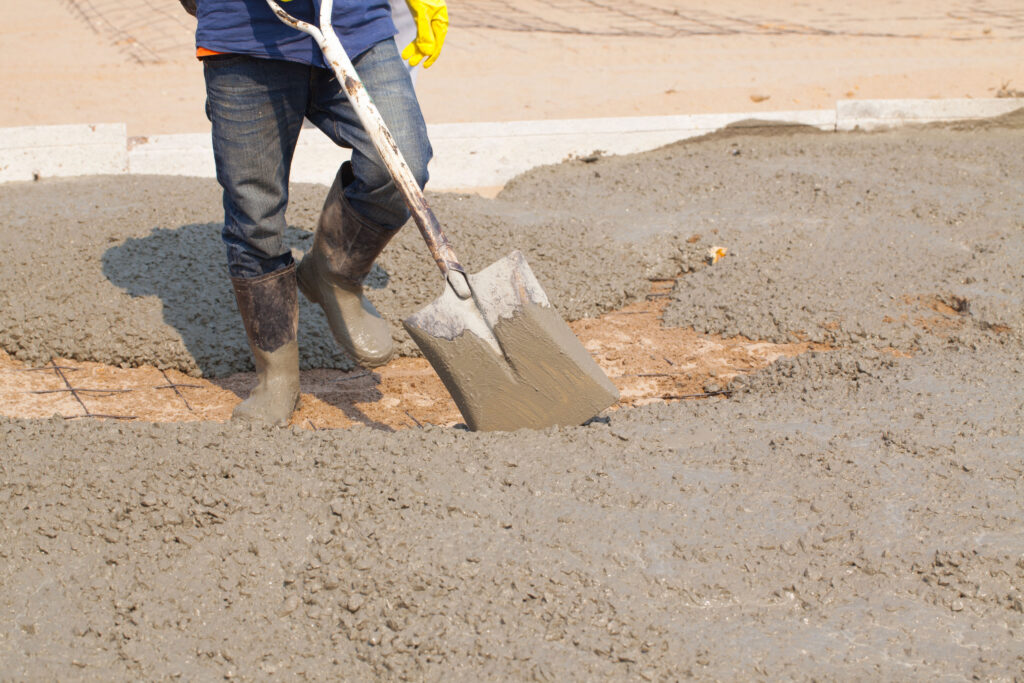
source: pinterest.com
- Mudjacking: By drilling holes, a slurry mixture consisting of water, soil, sand, and cement is injected. The mixture expands and fills the void beneath the concrete surface. Gradually, it raises the settled surface and hardens over time. Mudjacking provides a stable foundation for the leveled concrete.
- Polyurethane Foam Injection: By drilling holes, polyurethane foam is injected. The foam rapidly expands after injection and fills the void beneath the concrete. Within minutes, it creates a solid and stable support for the leveled concrete.
- Pressure Grouting: By drilling holes, cement-based grout is injected. The grout expands and fills the void beneath the concrete. Over time, it solidifies and creates stability for the leveled concrete.
- Self-Leveling Concrete: A specialized mixture of cement, polymers, and aggregates is poured onto the uneven surface. The self-leveling concrete spreads evenly and fills the unevenness. It creates a smooth and durable concrete surface.
- Specialized Resins: By drilling holes, liquid resin is injected. It expands upon injection and raises the settled concrete. These raisins undergo a curing process and create a solid foundation for leveled concrete.
- Slab Lifting Piers: Steel piers are driven into the ground beneath the settled concrete. These piers lift and support the slab to the desired level. It is particularly effective for stabilizing and lifting larger concrete structures.
- Hydraulic Jacking: Hydraulic jacks are strategically placed beneath the concrete. Then, a controlled pressure is applied to lift the concrete surface. Hydraulic jacking allows you to make precise adjustments during the lifting process. It is suitable for lifting and leveling heavy concrete structures.
Based on various factors, one of these methods is used to level the uneven surfaces. These materials ensure that the concrete surface is stable and smooth.
Patching and Cleaning
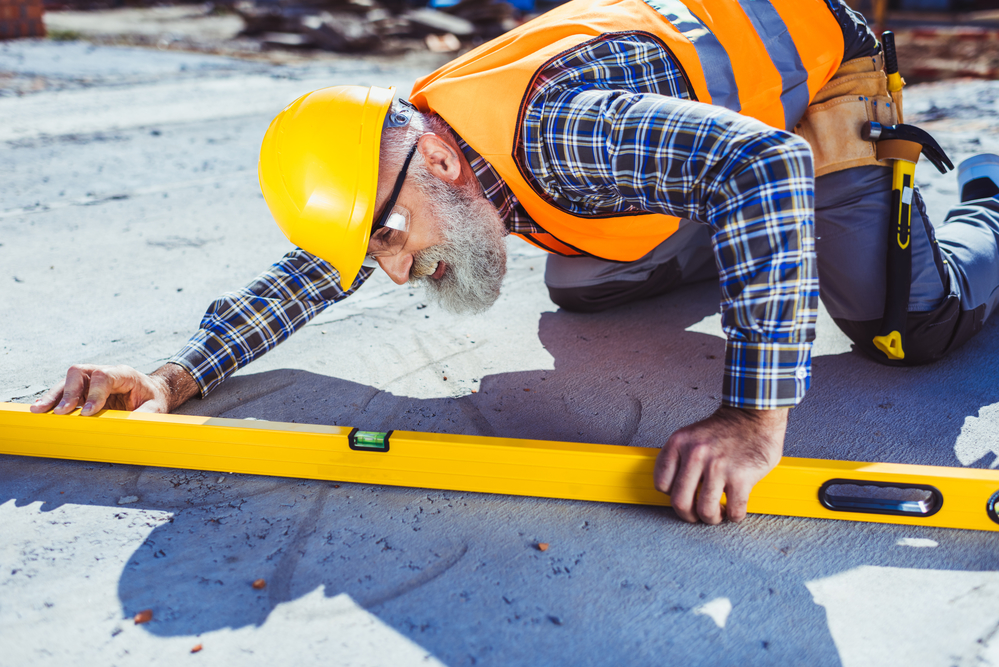
source: pinterest.com
Once the best method has been used and the concrete level becomes even, the process of patching and cleaning begins. The injection holes or any wear-tear of the surface are restored to their original aesthetics. It is patched with matching colors, and the surface is cleaned for a finished look.
Final Inspection
Then, the overall inspection of the process is assessed. It is done to confirm that the concrete is level, stable, and free from defects. The professionals make sure that the issue and underlying causes have been addressed.
Post-Concrete Leveling Tips for Maintenance
The concrete leveling process ensures a smooth concrete surface, but regular maintenance is vital. It will help you avoid frequent repairs and preserve your investment. We recommend implementing the following post-leveling maintenance tips:
- Avoid harsh chemicals on concrete surfaces as they can erode and compromise its structural integrity.
- Ensure a proper drainage system to prevent soil erosion and settlement problems.
- Periodically apply sealant to protect the concrete from stains and moisture penetration.
- Periodically inspect the leveled concrete surface for cracks, settlement, or signs of wear.
- Minimize overloading by placing load-bearing structures to distribute weight evenly.
- Plan landscaping features by keeping trees and shrubs at a safe distance to avoid root damage.
- Regularly consult with concrete professionals for periodic assessments and address any maintenance concerns.
Conclusion
Without extensive demolition and replacement, concrete leveling is a cost-effective and efficient solution to rectify uneven surfaces. It prevents structural issues caused by settlement and enhances the aesthetic appeal of your home. Concrete leveling works by using specific materials to fill the void created due to various factors. These materials lift the concrete level to its original form by providing a secure foundation. With proper maintenance, concrete leveling can last for years, making it a lasting investment for your home.

